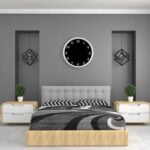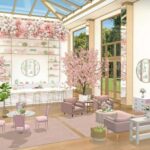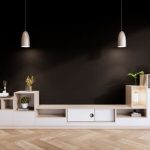Are you looking to transform your living space into a beautiful and functional home? In this blog post, we will discuss how to decorate the interior of your home, from identifying your personal style to choosing the right color scheme, furniture, and accessories.
The design and layout of your home can have a significant impact on your overall well-being and lifestyle, making it important to create a space that is both aesthetically pleasing and practical. By following the tips and ideas in this article, you can create an inviting and personalized environment that reflects your unique style and preferences.
When it comes to interior design, one of the first steps is identifying your personal style. Whether you lean toward modern, minimalist, traditional, or eclectic designs, understanding different interior design styles can help you discover what resonates with you the most.
Once you have pinpointed your style preferences, the next step is planning and budgeting for your decorating project. Setting a budget and creating a plan will help ensure that you stay on track while bringing your vision to life without overspending.
In addition to exploring various design styles, choosing the right color scheme plays a crucial role in creating harmony within your living space. Understanding the psychology of color and its impact on mood and atmosphere can guide in selecting a cohesive color palette for each room in your home.
Furthermore, when it comes to furniture and layout, it’s essential to choose pieces that not only complement your style but also fit within the space comfortably while creating functional and visually appealing layouts for each room. Stay tuned for more detailed tips on tackling these key elements of interior decorating.
Identifying Your Style
Understanding your personal style is crucial when it comes to decorating the interior of your home. Whether you lean towards a modern, minimalist, traditional, or eclectic aesthetic, knowing your preferences will help you create a cohesive and visually pleasing space that reflects your personality.
To determine your style, take some time to explore different interior design styles by researching online or visiting showrooms and model homes. Pay attention to the elements that resonate with you and make note of colors, patterns, and materials that catch your eye.
Once you have familiarized yourself with various design styles, it’s important to assess your own preferences and lifestyle. Consider the type of furniture and decor that makes you feel comfortable and at ease. Do you prefer clean lines and neutral colors? Or are you drawn to bold patterns and rich textures? Asking yourself these questions will give you a better understanding of what truly resonates with you in terms of interior design.
After identifying your style, don’t be afraid to mix and match different elements from various design styles to create a unique look that suits your taste. Remember that your personal style should ultimately reflect who you are as an individual or as a family. By taking the time to identify your style preferences, you can then move forward with confidence in decorating the interior of your home in a way that resonates with you on a personal level.
Planning and Budgeting
When it comes to decorating the interior of your home, one of the most crucial steps is planning and budgeting. Without a clear plan and budget in place, it’s easy to overspend and end up with a space that doesn’t truly reflect your style or needs. Here are some tips for successful planning and budgeting when decorating your home:
- Set a realistic budget: Before diving into any decorating project, it’s essential to establish a realistic budget. Consider how much you’re willing to invest in each room and prioritize where you want to allocate the majority of your funds.
- Create a design plan: Take the time to carefully plan out the design elements you want to incorporate into each room. This could include furniture, color schemes, decorative accessories, and lighting. Having a clear vision of your design plan will help you stay within budget and avoid impulse buys.
- Research cost-effective solutions: There are plenty of cost-effective ways to decorate your home without breaking the bank. Look for DIY projects, thrifted furniture pieces, or affordable decor items that align with your style preferences.
By following these planning and budgeting tips, you can achieve a beautifully decorated interior that reflects your personal style without straining your finances.
Remember, successful interior decorating isn’t about how much money you spend but rather how well you can creatively use what resources you have at hand.
Moreover, effective planning allows you to envision the final look of your interior based on your preferences and ensures that every element complements each other seamlessly. This enables you to create a cohesive look throughout your entire home while staying within your budget constraints.
Choosing the Right Color Scheme
Psychology of Color
When it comes to choosing the right color scheme for your home, it’s important to understand the psychology of color and its impact on mood and atmosphere. Different colors can evoke different emotions and have varying effects on individuals.
For example, cool tones like blues and greens are known to create a calming and serene environment, while warm tones like reds and oranges can add energy and warmth to a space. By understanding the psychology behind colors, you can choose a color scheme that aligns with the atmosphere you want to create in each room of your home.
Tips for Selecting a Cohesive Color Palette
Once you have a grasp on the psychology of color, the next step is to select a cohesive color palette for your home. Start by considering the overall vibe you want each room to have. Do you prefer a light and airy feel or a cozy and intimate atmosphere?
Choose a dominant color for each room as well as one or two accent colors that complement it. Additionally, consider how each room flows into the next – creating a sense of continuity through your color choices will help give your home an overall cohesive look.
Consider Natural Light and Room Size
When choosing a color scheme, it’s crucial to take into account natural light and the size of each room. Darker colors can make a small space feel even smaller, while lighter hues can help open up cramped quarters.
Similarly, rooms with ample natural light can support bolder and darker shades, whereas rooms with limited natural light may benefit from brighter or pastel tones. By considering these factors in conjunction with your desired atmosphere, you’ll be better equipped in selecting a color scheme that suits not only your personal style but also enhances the functionality of your living space.
Furniture and Layout
Choosing the right furniture and creating an effective layout are crucial aspects of interior design. The right furniture can enhance the style of your home while also providing comfort and functionality. Meanwhile, a well-thought-out layout can make the most of your space and ensure that each room flows seamlessly. Here are some tips for ensuring that your furniture and layout choices align with your personal style and make the most of your living space:
- Consider the size and shape of each room when choosing furniture. For example, in smaller spaces, it may be best to opt for sleek, modular pieces that maximize space. In larger rooms, you can experiment with different furniture arrangements.
- Choose furniture that complements your personal style and the overall aesthetic of your home. Whether you prefer modern, classic, or eclectic design, selecting pieces that align with your style will create a cohesive look throughout your home.
- Create a functional layout for each room by considering traffic flow, focal points (such as a fireplace or large window), and the intended use of the space. For example, in a living room, arrange seating to encourage conversation and ensure easy access to entertainment areas.
It’s important to remember that interior design is not just about making a space look good; it’s about making it work well for those who live in it. By carefully selecting furniture that complements your style and creating a thoughtful layout for each room, you can achieve both beauty and functionality in your home how to decorate interior of home.
Accessorizing and Decorative Elements
When it comes to decorating the interior of your home, the accessories and decorative elements play a crucial role in bringing the design together and adding personality to your space. From artwork and rugs to greenery and other decorative accents, these elements can truly make a house feel like a home. But how do you go about choosing the right accessories and incorporating them into your decor?
Artwork is a great way to add visual interest and personality to your home. When selecting artwork for your space, consider pieces that resonate with you on a personal level. Look for artwork that speaks to your style and complements the color scheme of the room. You can also use artwork to create a focal point in a room or tie different design elements together.
Another important decorative element to consider is adding greenery to your home. Plants not only bring life and freshness into a space but also have been shown to have mood-boosting benefits. Whether you opt for large potted plants or small succulents, adding greenery can instantly liven up any room in your home.
Incorporating decorative elements such as rugs, throw pillows, and vases is another way to infuse style into your living spaces. These items can add texture, color, and visual interest while reflecting your personal taste. Be mindful of scale when selecting decorative accessories – too many small items can clutter a space while too few large items can make it feel stark. The key is finding the right balance for each room in your home.
| Decorative Element | Tips |
|---|---|
| Artwork | Choose pieces that reflect your personal style and complement the color scheme of the room. |
| Greenery | Add plants to bring life into your space and improve air quality. |
| Rugs, Pillows, Vases | Select items that add texture, color, & amp; visual interest while reflecting personal taste. |
Lighting and Atmosphere
The lighting in a home is a crucial factor in setting the atmosphere and enhancing the overall interior design. Proper lighting can transform a space, making it feel cozy, inviting, and functional. When considering how to decorate the interior of your home, it’s important to pay attention to the different types of lighting and their effects on the mood of each room.
One way to enhance the ambiance in your home is by strategically placing different types of lighting fixtures. For example, using a combination of ambient, task, and accent lighting can create layers of light that add depth and warmth to a room. Additionally, incorporating dimmer switches allows for flexibility in controlling the brightness according to different activities or times of day.
Natural light also plays a significant role in creating an inviting atmosphere within a living space. Maximizing natural light through window treatments that allow for optimal sunlight while maintaining privacy can greatly impact the mood of a room.
Properly addressing the lighting needs in the interior design of a home can significantly impact its overall look and feel. By carefully choosing lighting fixtures and optimizing natural light sources, you can create an atmosphere that is both functional and aesthetically pleasing.
| Lighting Tips | Impact |
|---|---|
| Layer different types of lighting | Creates depth and warmth in a room |
| Maximize natural light | Enhances ambiance and saves on energy costs |
| Use dimmer switches | Allows for flexibility in controlling brightness levels |
DIY Decorating Ideas
Budget-Friendly DIY Projects
Decorating your home doesn’t have to break the bank. There are plenty of budget-friendly DIY projects that can add personality and style to your living space. From creating your own artwork to upcycling furniture, the possibilities are endless.
For example, you can repurpose old mason jars into stylish vases or create your own custom throw pillows using fabric and sewing supplies. These projects not only save money but also allow you to infuse your home with unique, handmade touches.
Step-by-Step Instructions
If you’re new to DIY projects, it’s important to start with something simple and manageable. Look for step-by-step instructions online or in DIY books and magazines. For instance, you might find a tutorial on how to build a wall-mounted bookshelf or create a gallery wall using frames and artwork you already have. Following clear instructions can help ensure that your DIY projects turn out just the way you want them, without any unnecessary frustration.
Personalizing Your Space
One of the major benefits of DIY decorating is the ability to personalize your space in a meaningful way. Whether you’re adding handmade touches or repurposing existing items, DIY projects allow you to showcase your creativity and individuality throughout your home. This can foster a deeper sense of connection with your living environment and provide a true reflection of your personal style.
By incorporating budget-friendly DIY projects into your interior decorating plans, you can elevate the look of your home while staying within your budget and infusing it with unique touches that reflect who you are.
Conclusion
Decorating the interior of your home is an important aspect of creating a beautiful and functional living space. From identifying your personal style to choosing the right color scheme and furniture, each step plays a crucial role in bringing your vision to life. In this article, we have explored the various elements involved in interior decorating and provided tips for successful home design.
One of the first steps in decorating your home is identifying your personal style. Whether you are drawn to modern, minimalist, or traditional design, understanding different interior design styles can help you discover what resonates with you. Take the time to explore various styles and find out what truly reflects your preferences.
Another important aspect that cannot be overlooked when decorating the interior of your home is planning and budgeting. Setting a budget for your project will help guide your decision-making process and ensure that you stay on track financially. By creating a plan and sticking to your budget, you can also incorporate cost-effective decorating solutions without compromising on style.
When it comes to choosing the right color scheme for your home, it’s essential to consider the psychology of color and its impact on mood and atmosphere. Selecting a cohesive color palette that complements your personal style can make a significant difference in creating a harmonious living space. By following these tips and incorporating DIY projects, you can create a unique interior design that truly reflects your personality and preferences.
Additional Resources
In conclusion, creating a beautiful and functional living space through interior design is essential for both aesthetic and practical reasons. By identifying your personal style, planning and budgeting effectively, choosing the right color scheme, furniture, layout, accessories, and lighting, you can transform any space into a reflection of your personality and preferences. DIY decorating ideas also offer great opportunities to add unique touches to your home on a budget.
It’s important to remember that with a little creativity and resourcefulness, anyone can achieve a stylish and comfortable home. Whether it’s through repurposing old furniture or creating handmade decor pieces, there are endless ways to personalize your living space. The key is to find inspiration from various sources and be open to trying new things.
By incorporating some of the tips mentioned in this article and adding your personal touch to the process of decorating your home, you can create an environment that truly feels like your own. Remember that interior design is not just about following trends, but about expressing yourself within the walls of your home. So go ahead – let your creativity flow and make your home a place that brings you joy every time you walk through the door.
Frequently Asked Questions
What Are the 7 Principles of Interior Design?
The 7 principles of interior design are unity, balance, rhythm, emphasis, proportion, scale, and harmony. These principles guide designers in creating cohesive and visually pleasing spaces that are both functional and aesthetically pleasing.
How Can I Make My House Look Nice Inside?
Making your house look nice inside can be achieved through various means such as decluttering to create a sense of openness and space, utilizing a cohesive color scheme, incorporating indoor plants for natural elements, and investing in quality lighting to set the mood.
How Do I Design the Interior of My House?
Designing the interior of your house involves careful consideration of factors such as your personal style and preferences, the functionality of each space, the flow of traffic within the home, and the use of appropriate furniture and decor to enhance the overall atmosphere.
It’s important to plan the layout effectively and choose suitable materials for flooring, walls, and furnishings to achieve a harmonious design.

I’m thrilled to be your companion on this exciting journey through the world of home decor and design. With a passion for turning houses into homes and a keen eye for the finer details, I’m here to help you transform your living spaces into beautiful, functional, and meaningful havens.





